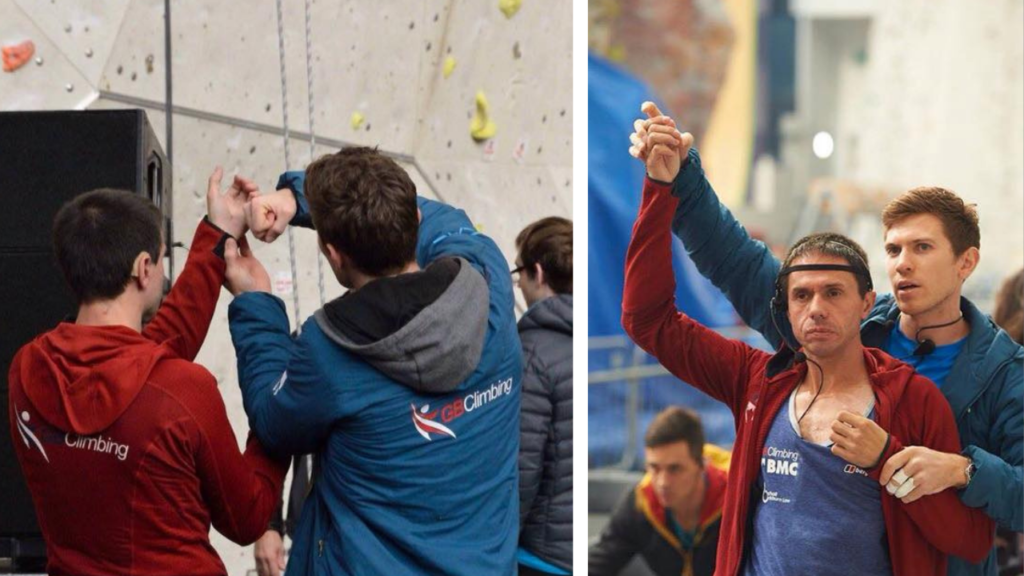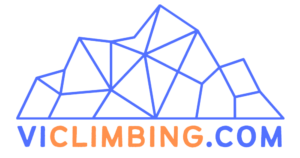Contents
Introduction
Route reading is important for all climbers including those with a visual impairment. As the grades go up so does the importance of knowing a little about the route before tackling it. When approaching a wall sighted climbers can take in important details without even thinking about route reading.
Even on simple routes it’s good for climbers to understand the style of the climb, type of holds and any potential hazards. Is the route vertical, slabby or overhanging? Are there any roof sections to watch your head on? Are the holds mostly on the left or the right of a corner? Is the arete in?
Conventional route reading
If you head to any climbing centre it’s likely that there will be people grabbing the air and waving their hands around. This method of route reading is very popular. The climber looks at the wall and mimics the climbing moves from the ground in the hope that the muscle memory will kick in on the wall. It’s a good technique and when taken to extremes (Adam Ondra!) it can lead to some incredible on-sight climbs. The basic elements involve locating all of the holds, working out the correct hand sequence and thinking about body positions.

The most common way of route reading with visually impaired climbers is based upon this technique. A sighted guide helps by moving the climber’s hands into the position of the holds, providing a little information about the route along the way. Generally most climbers and guides will start slowly. It’s helpful to provide details about individual holds and body positions throughout the route read. It usually takes a few repetitions for it to sink in and you’ll probably have to run through it together a few times to get the full benefit. This style of route reading is all about visualisation. While blind climbers might not be able to see the route, they may be able to visualise the climb quite clearly.
For some climbers this technique works really well but it’s often a lot of information to retain and it needs the sighted guide to have a clear understanding of how the route should be climbed. Even for skilled climbers this can be a challenge as height and style differences mean that the climber and guide would approach the climb a little differently. Having a good understanding of a climber’s style will be a big help with this.
Lego
The concept behind using lego for route reading is to create a tactile topo of the climb that a blind climber can feel and work through. LEGO pieces are not always very representative of climbing holds. However, by discussing the holds and even mixing in some physical hand positions, it’s possible for climbers to visualise the route quite clearly. Some bricks do look/feel like a particular hold but others (pockets, slopers, pinches) can be hard to represent.
Matthew Shifrin, a blind climber from the US pioneered this technique. This news video explains a little bit about how he came up with the idea and how it works.
Having tried it ourselves we can say it has worked incredibly well. John is quite a visual person (despite his lack of eyesight) and using the LEGO has allowed him to clearly visualise routes in a way he never managed using traditional techniques. It takes some time to set up but on harder or more complex climbs it is well worth doing. Using LEGO is unlikely to be accepted or practical in most international and some national competition settings because route reading is time limited.
What you will need
- Base plates – Rectangular base plates work well. We have 2 base rectangular base plates and often use them together.
- Bricks – Ideally small ones. There can be a lot of holds on routes and having smaller pieces helps with the scale. Odd shapes can also be very helpful.
- An organiser – A tool box with several dividers makes finding the best piece quick and easy.
